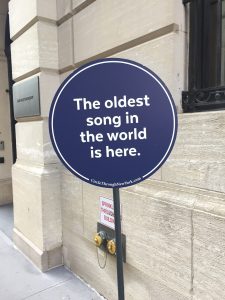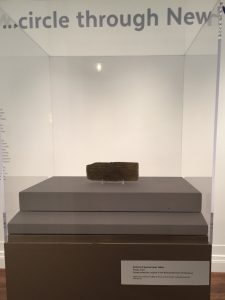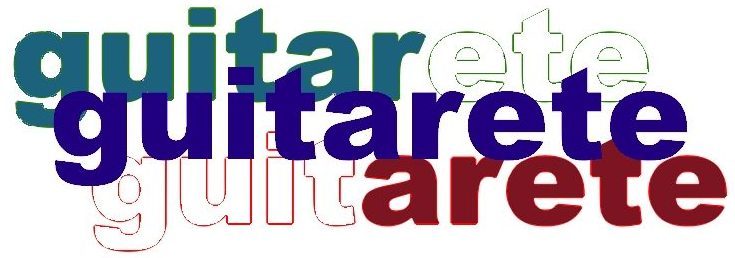On my way to Central Park one recent afternoon, I couldn’t resist investigating this sign:

“What’s the oldest song in the world?” is not a question I’ve ever asked. Given that audio recording didn’t exist until Edison’s phonograph in 1877 and we know of songs from long before that time, the question aims at the oldest known notated song. Through the end of August 2017, New York University’s Institute for the Study of the Ancient World hosts an exhibit that includes a reproduction the ancient tablet on which the oldest known song is notated (pictured below-not very exciting), along with a video installation that shows some contemporary renditions of the tune. (See the links below for audio.)

According to the exhibit’s wall text, the oldest song is known as “the Hurrian Hymn,” named after the ancient language of its lyrics, which was used in northern Syria and other parts of the Near East. The tablet on which the song is written contains not only lyrics but also references to intervals, mode, instrumentation, and playing technique (written in Akkadian and using Mesopotamian names and symbols).
To no one’s surprise, the putative oldest song in the world wasn’t written on or for guitars, but it was written for the lyre, a harp-like ancient instrument held on the lap and strummed with a pick. Michael Levy’s interpretation of the Hurrian Hymn makes use of “ancient lyre playing techniques, ranging from the use of “block and strum” improvisation at the end, glissando’s, trills & tremolos, and alternating between harp-like tones in the left hand produced by finger-plucked strings, and guitar-like tones in the right hand, produced by use of the plectrum.” You can hear Levy’s interpretation here . It is in the same family as the interpretations featured in the installation videos at the Institute for the Study of the Ancient World (a bit of which you can check out here).
As I listened to Levy’s interpretation, I found myself humming the melody and trying to pick out the lines on my guitar. It’s probably not meant to be played on a contemporary fretted instrument, so it took a little strategic bending to match the intervals—sort of like what you do when matching the microtonal bends of some blues licks.

